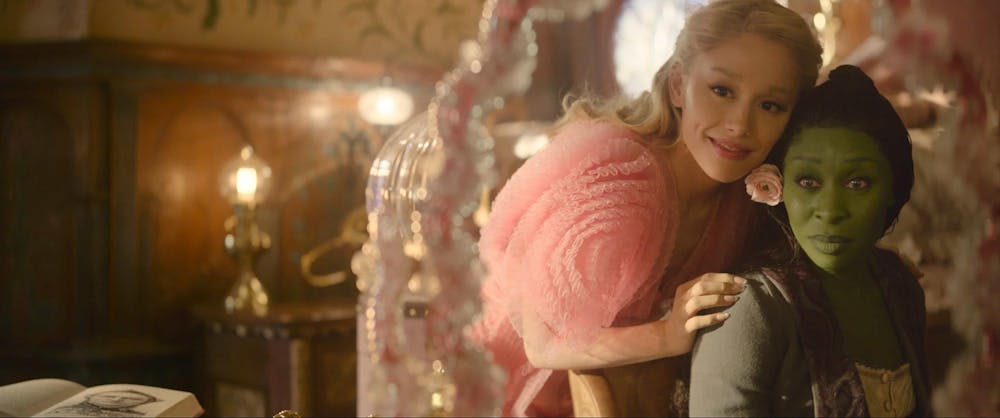The opinions and views expressed in this article are those of the author and do not reflect the opinion of Byte or Byte’s editorial board.
This review contains spoilers for Gregory Maguire's Wicked.
Gregory Maguire, best known for Wicked: The Life and Times of the Wicked Witch of the West, is an American fantasy novelist who retells classic children’s stories. He received his Ph.D. in English and American Literature from Tufts University and his B.A. from the State University of New York at Albany. He started his writing career in 1978, The Lightning Time, and continues to write books today.
Maguire’s latest book, Wicked, was published on Oct. 1, 2024, and is a retelling of The Wonderful Wizard of Oz by L. Frank Baum. Wicked is the story of Elphaba, the Wicked Witch of the West, and how she navigates the Land of Oz from birth to death. The novel follows how she grows up and the events that led to her becoming the Wicked Witch of the West. Readers get to experience the life of Elphaba and feel her emotions throughout the novel. It's a whirlwind of friendship, trust, and a corrupt government.
The Years Before Dorothy

Before Dorothy could crash-land in the Land of Oz, we get to know the real Wicked Witch of the West. I got to see how Elphaba grew up with everyone around her calling her green skin a curse, her mother telling young Elphaba that they could go for a swim where she would eventually die, and her parents being ashamed of her skin color and not letting many other people see her. I can see the lack of love from her parents and even more so when Elphaba’s little sister comes to be. Her parents show more interest and love in Nessarose than in Elphaba. Elphaba has to learn to take care of her sister, yet no one takes care of Elphaba. Nanny had done her best to take care of Elphaba, but Nessarose came with more care than Elphaba.
We meet lovely characters who become Elphaba’s friends. They ask Elphaba for help and invite her to go out and have fun. Elphaba, for the most part, tries to steer clear, but inevitably does help and have fun with them. Some characters became my favorites, such as Boq, and others are not heard of again until the end of the novel, but each character held a special place in my heart.
Throughout the entire novel, we get to truly know Elphaba and her friends. We get to experience quests with Elphaba and learn her likes and dislikes. Her advocacy for animals is something that makes her seem more human than the novel talks about. As Elphaba grows we see what her friendships and love life look like, while also getting a few perspectives of her friends in their own point of view. With her friends’ points of views readers can see how Elphaba’s friends see her and how much trust they have for her.
Discrimination, Trust, and a Corrupted Government
Discrimination is one of the major themes in this novel, and it is portrayed very well. From the very beginning, I could see Elphaba getting discriminated against—her green skin made her easy prey for discrimination—and many of the other characters are as well. Discrimination also came forth when the debate of animals versus Animals was discussed. The animals are mainly used for slaughter and to get resources, while Animals are able to attend classes and live seemingly normal lives. Yet, Animals are heavily discriminated against; there was talk of not allowing Animals into schools and much more that caused some Animals to act like animals and serve their owners. Different species and humans alike are discriminated against throughout this novel, and it sheds so much light on what it can look like from different angles.

Trust is mentioned throughout the novel, allowing me to see how Elphaba and others have a strong belief in one another. Elphaba made friends at university whom she trusted, whether she knew it or not. She trusted those around her with facts of her life and information. Throughout the novel, readers can see trust being built through many of the characters. When the characters start to trust one another, it would make me feel as though the characters are forming a deeper connection, which in turn made me feel a closer and deeper connection to that character.
The government of Oz is what people could only imagine as a severely corrupt government. The leader is unwilling to help people, wants to ban Animals (a type of sapient being, separate from animals), and so much more. It is fascinating, however, to see this government and see how corrupt one can become. The leader seemed to demand something in return for helping someone, but he would want the item before he would help. He would demand something of whoever came before him but could not guarantee them the favor they had asked of him. At first, some readers are unaware of the corrupt government, but as the storyline goes on, you can slowly see how the government controls every aspect of the Land of Oz.
The Slow Setting and the Hardest Text to Decipher
Getting to know the setting was difficult in its own way. Many times, throughout reading about the setting, I was confused. But with any great fantasy novel, it takes time to get used to the setting. Figuring out the world layout was the slowest to read for me, but it was highly important. So, while I had a hard time picking up the book to get through the world-building part of the novel, I do not regret it and think it was entirely necessary to have explained in so much depth what each land of the world meant. The author explains the world in so much detail, which helped me visualize the world that I was reading about. Although some parts seemed to drag on for pages, it was magical to put it all together inside my head and imagine this beautiful world.
The book is written in classical literature text, meaning it reads as though it was written in the early 1900s. While this seems pleasant to some readers, I had the roughest time with this. It became harder to decipher the text and read without becoming confused. There were tons of words I had never heard of that were thrown around, which made it a lot harder to read the book at a steady pace. Although this type of text is harder to read, I would not have changed it. It added to the story in a way that I never could have thought possible. When reading, I could imagine that this would have taken place in the early 1900s, which is where it should have taken place during the time frame.
This book included so much imagery and figurative language, which brought the entire setting to life. The amount of figurative language I stumbled across was unlike any book I had ever read. I could truly picture the entire layout of the Land of Oz and picture each character thoroughly.
Overall Thoughts
I loved this book! In the beginning, I thought that there was no way I was going to end up liking this as much as I did. I thought I would be confused the entire time I was reading and would have to push myself to keep reading. Once I got truly invested, I read as much as I could. I would read whenever, wherever, to get further in the storyline and see what comes next.
I felt as though I was a part of the world while reading. I enjoyed getting to follow Elphaba and her friends and knowing what someone was thinking. It was such an amazing novel to read, and I could not have imagined how vivid the imagery would have been.
As much of a struggle as it was to get through the story-building part, it became a truly captivating story that delved deep into the socioeconomic culture of this land. While I am sad that the book came to an end, I am even more excited for the Wicked movie.
To anyone who wants a great book to read that can be imagined in such great detail: read Wicked, I promise you will not regret it!

Sources: Goodreads, Goodreads, Goodreads, Goodreads, Goodreads, Goodreads
Photos: Wicked, Wicked, Wicked
Contact Kalie Phillips-Shaw with comments at kalie.phillipsshaw@bsu.edu.




















